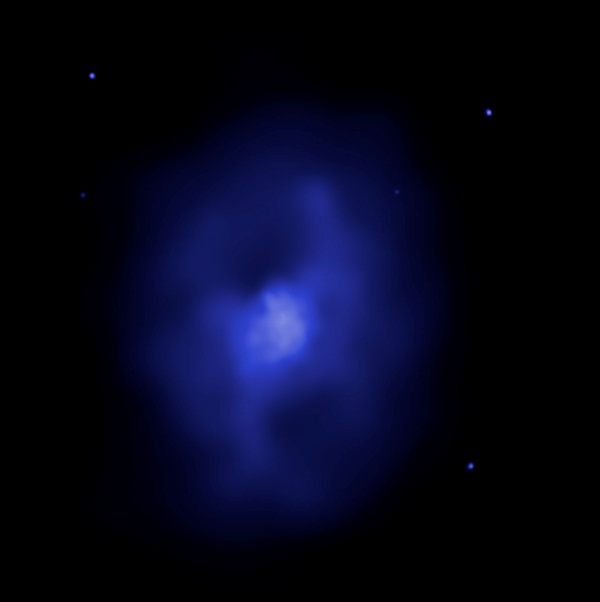Galaxy Cluster MS0735 – Three Telescopes Show a Very Different Picture

MS0735 is a captivating galaxy cluster that has perplexed scientists for years. Its unique properties have made it an object of fascination and study, and it continues to reveal new insights into the mysteries of the universe.
In this article, we delve deeper into the characteristics that make MS0735 so unique and view it with three different telescopes.
Where Is MS0735 located?
Galaxy cluster MS 0735.6+7421, as is its full name, is located approximately 2.6 billion light-years away in the constellation of Camelopardalis.
MS0735 Black Hole Eruption
The MS0735 cluster is home to one of the largest super massive black holes in the known universe. It is located in the galactic core of the central galaxy of the cluster and it produced one of the most powerful active galactic nucleus eruptions detected.
Three Different Views of MS0735
The featured image at the top of this article is actually a composite of three separate images in different wavelengths. Since the human eye can only see a small fraction of wavelengths, three images made by three different telescopes have been combined together to show a wider view of the galaxy cluster.
The image below taken by the Hubble Space Telescope in February 2006 is the optical view of the galaxy cluster. It means that this is all the human eye can see. There are dozens of galaxies bound together by gravity, but all the other wonders are invisible to us.

Actually, hot and diffuse gas with a temperature of nearly 50 million degrees fills the space between the galaxies. It emits X-rays, which can be seen as blue in the image below taken with the Chandra X-ray Observatory in November 2003. Enormous gaps can be seen in the gas, each roughly 640,000 light-years in diameter which is nearly seven times the diameter of the Milky Way.

Those gaps are filled with charged particles gyrating around magnetic field lines and emitting radio waves shown as red in the image below taken with the Very Large Array telescope in New Mexico in October 2004. The gaps were created by jets of charged particles ejected at nearly light speed from a huge supermassive black hole with the mass of nearly a billion Suns located in the nucleus of the bright central galaxy. The amount of gas displaced by those jets is staggering. It is the equivalent of more than one trillion solar masses.

Conclusion
In exploring the enigmatic realm of galaxy cluster MS0735, our view extends far beyond the limitations of human perception. Through the synthesis of optical, X-ray, and radio data, the colossal scale of its mysteries emerges. This cosmic assembly, housing a mammoth black hole and vast expanses of displaced matter, stands as a testament to the intricate interplay of forces shaping our universe, beckoning further inquiry into its compelling depths.
Originally published on August 17, 2011. Last updated on November 25, 2023.
Would you like to receive similar articles by email?






2 Comments
Madvi
I just feel we are so small in this world, just like a molecule when I see images of such huge universe. I feel this is something amazing about the huge universe to learn more about the world out of us. This is so much Informative about the light years and other galaxy cluster.
Paul Tomaszewski
I’m glad that you liked my post and thanks for the comment. 🙂
Yes, this galactic cluster is huge, but it is only a speck of dust compared to the whole Universe, as seen in the following video: Millennium Simulation – The Gigantic Size of our Universe [Video]
So this makes us look even smaller…